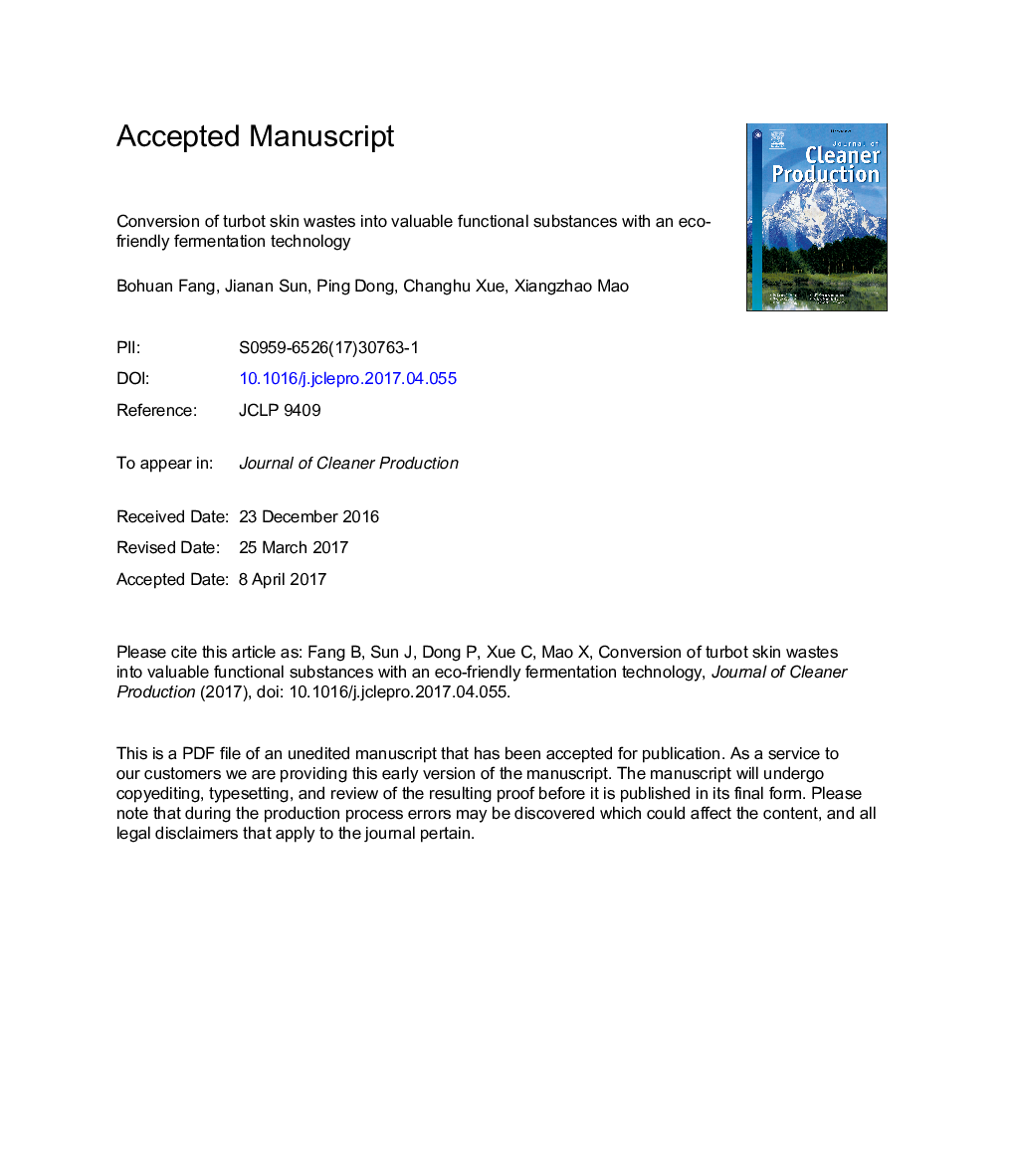| Article ID | Journal | Published Year | Pages | File Type |
|---|---|---|---|---|
| 5480992 | Journal of Cleaner Production | 2017 | 43 Pages |
Abstract
Booming development of fishing economy has significantly accelerated the fish waste generation in the world. The disposal of fish waste poses a serious environmental problem. The fish waste contains substantial amount high quality protein, which is an excellent resource of bioactive substance. In the conscious of eco-friendly and economical disposal, converting these waste into high value-added products for industrial applications is of profound implication. In this study, microorganism fermentation was employed and developed for the high-value utilization of discarded turbot skin. Among the various strains, Aspergillus oryzae showed the most promising hydrolysis ability. Under optimal conditions, a comprehensive detailed description of the fermentation process of hydrolysate from Aspergillus oryzae (AOH) is described. Additionally, amino acid compositions, volatile compounds, and antioxidant activity of AOH are studied. Size exclusion chromatography purification could effectively enhance the antioxidant activity. During gastrointestinal digestion, excellent residual antioxidant efficacy can be achieved by AOH and its chelating activity was improved. In physicochemical (temperature, light, pH) stability assays, AOH demonstrated better antioxidative stability in a wide range of pH and temperature conditions, but exhibited sensitivity to sunlight exposure. The results pointed out that turbot skin can be a cheap resource of antioxidant, which has many promising applications in pharmaceutical and food industry for health promotion and food preservation. Finally, fermentative bioprocess could be identified as a clean production which can not only be used for minimizing the impact of environment but also converting fish wastes into valuable functional substances.
Related Topics
Physical Sciences and Engineering
Energy
Renewable Energy, Sustainability and the Environment
Authors
Bohuan Fang, Jianan Sun, Ping Dong, Changhu Xue, Xiangzhao Mao,
